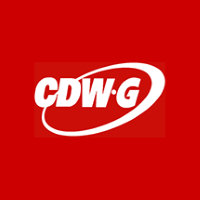
Iss A/S
CSE:ISS


| US |

|
Johnson & Johnson
NYSE:JNJ
|
Pharmaceuticals
|
| US |

|
Berkshire Hathaway Inc
NYSE:BRK.A
|
Financial Services
|
| US |

|
Bank of America Corp
NYSE:BAC
|
Banking
|
| US |

|
Mastercard Inc
NYSE:MA
|
Technology
|
| US |

|
UnitedHealth Group Inc
NYSE:UNH
|
Health Care
|
| US |

|
Exxon Mobil Corp
NYSE:XOM
|
Energy
|
| US |

|
Pfizer Inc
NYSE:PFE
|
Pharmaceuticals
|
| US |

|
Palantir Technologies Inc
NYSE:PLTR
|
Technology
|
| US |

|
Nike Inc
NYSE:NKE
|
Textiles, Apparel & Luxury Goods
|
| US |

|
Visa Inc
NYSE:V
|
Technology
|
| CN |

|
Alibaba Group Holding Ltd
NYSE:BABA
|
Retail
|
| US |

|
JPMorgan Chase & Co
NYSE:JPM
|
Banking
|
| US |

|
Coca-Cola Co
NYSE:KO
|
Beverages
|
| US |

|
Walmart Inc
NYSE:WMT
|
Retail
|
| US |

|
Verizon Communications Inc
NYSE:VZ
|
Telecommunication
|
| US |

|
Chevron Corp
NYSE:CVX
|
Energy
|
Utilize notes to systematically review your investment decisions. By reflecting on past outcomes, you can discern effective strategies and identify those that underperformed. This continuous feedback loop enables you to adapt and refine your approach, optimizing for future success.
Each note serves as a learning point, offering insights into your decision-making processes. Over time, you'll accumulate a personalized database of knowledge, enhancing your ability to make informed decisions quickly and effectively.
With a comprehensive record of your investment history at your fingertips, you can compare current opportunities against past experiences. This not only bolsters your confidence but also ensures that each decision is grounded in a well-documented rationale.
Do you really want to delete this note?
This action cannot be undone.

| 52 Week Range |
124.5
214.2
|
| Price Target |
|
We'll email you a reminder when the closing price reaches DKK.
Choose the stock you wish to monitor with a price alert.

|
Johnson & Johnson
NYSE:JNJ
|
US |

|
Berkshire Hathaway Inc
NYSE:BRK.A
|
US |

|
Bank of America Corp
NYSE:BAC
|
US |

|
Mastercard Inc
NYSE:MA
|
US |

|
UnitedHealth Group Inc
NYSE:UNH
|
US |

|
Exxon Mobil Corp
NYSE:XOM
|
US |

|
Pfizer Inc
NYSE:PFE
|
US |

|
Palantir Technologies Inc
NYSE:PLTR
|
US |

|
Nike Inc
NYSE:NKE
|
US |

|
Visa Inc
NYSE:V
|
US |

|
Alibaba Group Holding Ltd
NYSE:BABA
|
CN |

|
JPMorgan Chase & Co
NYSE:JPM
|
US |

|
Coca-Cola Co
NYSE:KO
|
US |

|
Walmart Inc
NYSE:WMT
|
US |

|
Verizon Communications Inc
NYSE:VZ
|
US |

|
Chevron Corp
NYSE:CVX
|
US |
This alert will be permanently deleted.
Iss A/S
In the bustling marketplace of global facility services, Iss A/S stands out as a seasoned player, weaving an intricate tapestry of services that touch nearly every aspect of the workplace environment. Founded in 1901 in Denmark, the company began its journey in the security sector, and over the decades, evolved and diversified its portfolio to carve out a formidable presence in the integrated facility services industry. ISS’s approach is all about understanding the intricate needs of businesses and crafting solutions that enhance efficiency and comfort in the workplace. From catering and cleaning to security and property services, ISS integrates these offerings to provide a seamless service experience, tailoring each to the specific needs of its clients across various industries, be it healthcare, business, or education.
The financial engine of ISS is driven by long-term contracts with businesses and public institutions, ensuring a stable and predictable revenue stream. The company’s model emphasizes large-scale, long-term partnerships which allow it to leverage its significant expertise and infrastructure to provide cost-effective, high-quality services. By positioning itself as an indispensable partner in maintaining the operational backbone of its clients’ properties, ISS not only ensures those spaces run efficiently and sustainably but also helps in driving the productivity of client organizations. This strategic alignment of services with client needs creates a value proposition that goes beyond mere cost savings, fostering a mutually beneficial relationship that fuels the company's profitability and growth in the competitive landscape of global facility management.

In the bustling marketplace of global facility services, Iss A/S stands out as a seasoned player, weaving an intricate tapestry of services that touch nearly every aspect of the workplace environment. Founded in 1901 in Denmark, the company began its journey in the security sector, and over the decades, evolved and diversified its portfolio to carve out a formidable presence in the integrated facility services industry. ISS’s approach is all about understanding the intricate needs of businesses and crafting solutions that enhance efficiency and comfort in the workplace. From catering and cleaning to security and property services, ISS integrates these offerings to provide a seamless service experience, tailoring each to the specific needs of its clients across various industries, be it healthcare, business, or education.
The financial engine of ISS is driven by long-term contracts with businesses and public institutions, ensuring a stable and predictable revenue stream. The company’s model emphasizes large-scale, long-term partnerships which allow it to leverage its significant expertise and infrastructure to provide cost-effective, high-quality services. By positioning itself as an indispensable partner in maintaining the operational backbone of its clients’ properties, ISS not only ensures those spaces run efficiently and sustainably but also helps in driving the productivity of client organizations. This strategic alignment of services with client needs creates a value proposition that goes beyond mere cost savings, fostering a mutually beneficial relationship that fuels the company's profitability and growth in the competitive landscape of global facility management.
Margin Upgrade: ISS raised its operating margin outlook from above 2% to around 2.5% for 2021, citing strong progress in turnaround areas.
Cash Flow Guidance: Free cash flow guidance was also upgraded from above DKK 1 billion to around DKK 1.5 billion, mainly due to improved margins and working capital.
Revenue Growth: Organic growth for Q3 was 2.6%, with revenue reaching DKK 17.5 billion, showing ongoing recovery as offices gradually reopen.
Turnaround Progress: The company highlighted better performance in previously underperforming areas (hotspots), particularly in the UK and France.
Pipeline & Retention: ISS reported a strong commercial pipeline and high contract renewal activity, with no major red flags in upcoming large renewals.
Labor Market: Labor shortages and wage inflation were noted, especially in the US, but these have not materially affected margins or growth so far.
Productivity Tools: New data-driven cleaning productivity tools are being rolled out to improve efficiency, profitability, and risk management.
Divestment Progress: The company has reached 70% (DKK 1.4 billion) of its DKK 2 billion divestment target for 2021–2022.






































